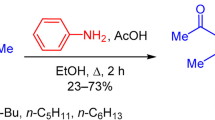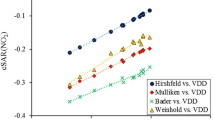Abstract
THE formation of a benzylic carbanion from 2-phenylethanethiol in the presence of potassium hydroxide at 200° ultimately yields polystyrene (53 per cent) by a β-elimination of sulphide ion1. Recently, we have observed that the carbanions formed from benzylsulphide and related species in potassium tert-butoxide/dimethylformamide (DMF) at 80° undergo a 1,3-re-arrangement and subsequent β-elimination of the sulphur moiety to yield stilbene2 in the same manner as above. As a logical extension of these studies, we have examined the effect of the hetero atom on rearrangement-elimination reactions of this type. The results obtained are of theoretical rather than synthetic interest.
Similar content being viewed by others
References
Sontag, D., Ann. Chim. (11), 1 (1934).
Wallace, T. J., Pobiner, H., Hofmann, J. E., and Schriesheim, A., Proc. Chem. Soc., 673 (1963).
Price, C. C., and Oae, S., Sulfur Bonding (Ronald Press, New York, 1962).
Parker, A. J., Quart. Rev., 16, 163 (1962).
Author information
Authors and Affiliations
Rights and permissions
About this article
Cite this article
WALLACE, T., HOFMANN, J. & SCHRIESHEIM, A. Characteristics of Benzylic Carbanions. Nature 199, 1287–1288 (1963). https://doi.org/10.1038/1991287b0
Issue Date:
DOI: https://doi.org/10.1038/1991287b0
- Springer Nature Limited





